
SS Elingamite was an Australian passenger steamer of 2,585 tons, built in 1887, and owned by Huddart Parker. The ship was wrecked on 9 November 1902 off the north coast of New Zealand carrying a large consignment of gold. Now the Elingamite wreck is a favourite site for adventurous divers because of the drama associated with it, and wild tales of lost treasure.

The Dee Why and Curl Curl, were two identical steam ferries servicing Sydney Harbour's Circular Quay to Manly service. Both commissioned in 1928, they were the largest ferries on Sydney Harbour until the 1938 introduction of the South Steyne.

Kenn Reef is a submerged coral atoll off the Pacific coast of Queensland, Australia. It is about 15 by 8 km and appears as either a backward facing "L" or a boot. The reef covers an area of approximately 40 km2, with an islet in the Southeast part of the reef called Observatory Cay which is approximately 2 m above the high tide level

Saumarez Reef is one of the southernmost reefs to be located in the Coral Sea Islands and part of the Coral Sea Shelf; it contains three main reefs and numerous smaller reefs all of which form a large crescent-shaped formation open to the northwest, about 27 by 14 km, area less than 300 km2.
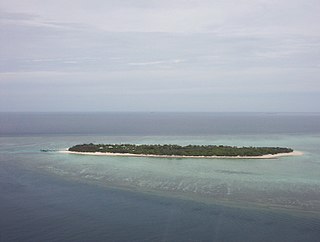
The islands and reefs of the Capricorn and Bunker Group are situated astride the Tropic of Capricorn at the southern end of the Great Barrier Reef, approximately 80 kilometres east of Gladstone, which is situated on the central coast of the Gladstone Region, Queensland, Australia.
Ada and Ethel was a wooden schooner that was wrecked 10 miles (16 km) southeast of Seal Rocks, New South Wales, Australia, on 26 October 1887.
Admiral Gifford was a wooden schooner that was lost while travelling between Port Macquarie and Sydney, New South Wales, on 8 October 1834 with a cargo of grain, hides and tallow.
The Adolphus was a wooden brigantine that was wrecked on the rocks west of Pier Head at Wollongong harbour in New South Wales on 29 November 1866. The ship was carrying coal from Wollongong to Sydney under the command of Captain William Kean. There were no casualties, but the vessel was lost. The wreck has not been located, but the approximate coordinates are 34.4189°S 150.9071°E.
The Advance was a wooden topsail schooner built in 1872 at Terrigal, that was wrecked when it missed stays whilst carrying ballast between Botany Bay and Port Stephens under the command of Captain J. Delaney and was lost at Henry Head Bight, Botany Bay, New South Wales on 11 February 1884
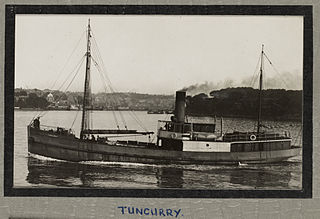
The Tuncurry was a wooden carvel screw steamer built in 1903 at Cape Hawke in the Australian state of New South Wales, that was wrecked when she sprang a leak whilst carrying explosives, cement, whiskey, jam and other general cargo between Sydney and Brisbane. She was lost off Barrenjoey Head, Broken Bay, New South Wales on 22 October 1916.
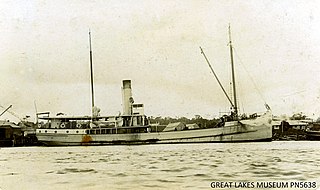
The Comboyne was a wooden screw steamer built in 1911 at Tuncurry, that was wrecked when it struck an object whilst carrying timber to Wollongong and was lost at approximately 1 mile (1.6 km) off Bass Point, Shellharbour, New South Wales on 27 November 1920.

The Narara was a wooden carvel screw steamer built in 1900 at Jervis Bay, that was wrecked when it sprang a leak while carrying general cargo between Sydney and the Hawkesbury River and was lost at 2 ml SE off Little Reef Newport near, Barranjoey, New South Wales on 29 May 1909. The vessel commenced her runs from Sydney Harbour to the Hawkesbury River in January 1900 and continued on this run till the time of her final 1909 sinking. During 1903 the vessel was burned to the water line and sank at its mooring only to be refloated and rebuilt and started back on the same run.

The Koonya was a wood carvel screw steamer built in 1887 at Hobart, that was wrecked when it stuck the shore at Doboy reef whilst carrying passengers & cargo between Moruya and Sydney and was lost off Cronulla Beach, Port Hacking, New South Wales on 25 January 1898.
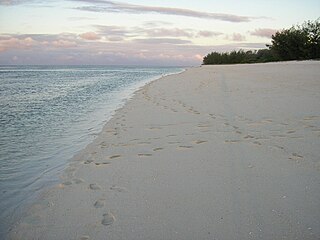
Masthead Island is a coral cay located in the southern Great Barrier Reef, 60 kilometres northeast of Gladstone, Queensland. The island is a protected area and forms part of Capricornia Cays National Park. Masthead Island is one of the most undisturbed cays in the national park because human and feral animal impacts have been rare. The cay covers an area of 0.45 square kilometres (0.17 sq mi) and is surrounded by a coral reef that is partially exposed at low-tide. It is part of the Capricornia Cays Important Bird Area.
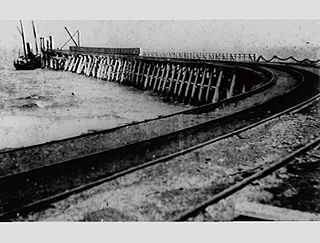
The Merksworth was an iron steamer screw built in 1874 at, Paisley, that was wrecked when it swamped whilst carrying coal between Newcastle and Sydney and was lost off Newcastle, Stockton Beach, New South Wales on 7 May 1898.

Kuramia was a "K-class" ferry on Sydney Harbour. Commissioned in 1914, the timber-hulled steamer was built for Sydney Ferries Limited during the early twentieth boom in cross-harbour ferry travel. At 353 tons, she was the largest wooden ferry on Sydney Harbour.
SS Kate was a wooden carvel screw steamer built in 1883 at Balmain that was twice struck and sunk by Port Jackson & Manly Steamship Company ferries.

SS Dorrigo was a cargo and passenger steam ship. It was built under the name of Saint Francois by the Smiths Dock Company at the South Bank in Middlesbrough on the River Tees in Northeast England for the Compagnie Navale de l'Océanie for the Pacific Island postal and general trade service, for which it sailed the waters of the Pacific from 1914 to 1921. The ship suffered minor damage during the First World War during the Bombardment of Papeete, prior to coming into the hands of the Langley Bros who placed it in the Sydney to Coffs Harbour route from 1922 to 1925. Upon the demise of the Langley Bros shipping firm in 1925 the vessel came into the service of John Burke and Co and was used for the Northern Queensland runs prior to its loss on 4 April 1926.
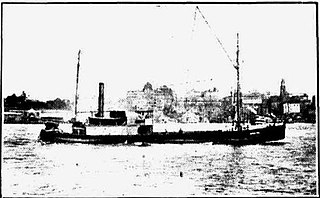
The Queen Bee was a wooden carvel Twin-screw steamer built in 1907 at the Rock Davis shipyard at Blackwall, New South Wales, that was wrecked when she sprang a leak whilst carrying coal between Newcastle and Sydney. She was lost off Barrenjoey Head, Broken Bay, New South Wales on 2 September 1922.
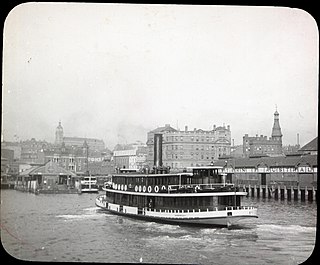
Kurraba and Kirribilli were two similar "K-class" ferries on Sydney Harbour. Launched in 1899 and 1900 respectively, the two timber-hulled steamers were built for Sydney Ferries Limited during the boom in cross-harbour ferry travel prior to the opening of the Sydney Harbour Bridge.

















